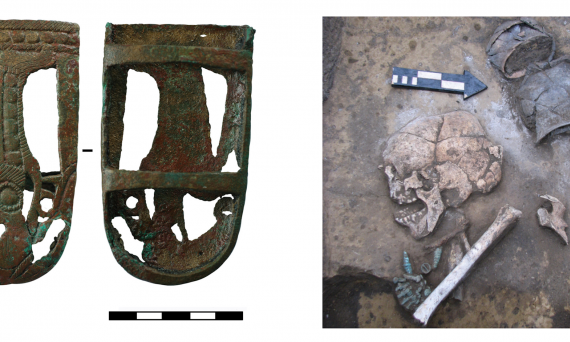European University researchers Artem Nedoluzhko and Fedor Sharko as lead authors have published an article in the prestigious international journal European Journal of Human Genetics (Q1, impact factor: 5.2). Together with Russian colleagues, they analyzed nuclear DNA from the remains of five representatives of the Koban archaeological culture.
The analysis of five nuclear genomes of Koban culture carriers, whose remains were excavated during archaeological expeditions in the North Caucasus, confirmed the previously obtained data on mitochondrial DNA variability and Y-chromosome markers, confirming the genetic continuity of ancient Caucasian cultures at the turn of the Bronze and Iron Ages.
The study showed a close genetic link between the Kobans and the Kura-Araxes and Maikop cultures (Caucasian Bronze Age) on the one hand, and the Alanian culture (Iron Age) on the other. A significant genetic contribution of representatives of steppe nomadic peoples, primarily European Scythians, was also discovered.
Artem Nedoluzhko elaborates:
"The North Caucasus was a kind of bridge in the settlement of Eurasia by our ancestors and played an important role in the formation of the culture and gene pool of the local population. The Koban archaeological culture, formed in the Late Bronze Age on the North Caucasian Plateau, has been regarded as a cultural bridge between the ancient and modern autochthonous peoples of the Caucasus. Our work shows that along with cultural continuity in the Caucasus there is also genetic continuity, a continuity which does not exclude genetic infusions from outside. Further research with a larger sample will allow us to more fully understand this topic."
To learn more about the study, visit PCR.news, the N + 1 portal and the website of the European Journal of Human Genetics.
Photo from an article in the European Journal of Human Genetics / Scabbard tip and photo of the burial in Zayukovo-3. Credit: Eur J Hum Genet (2024). DOI: 10.1038/s41431-023-01524-4
